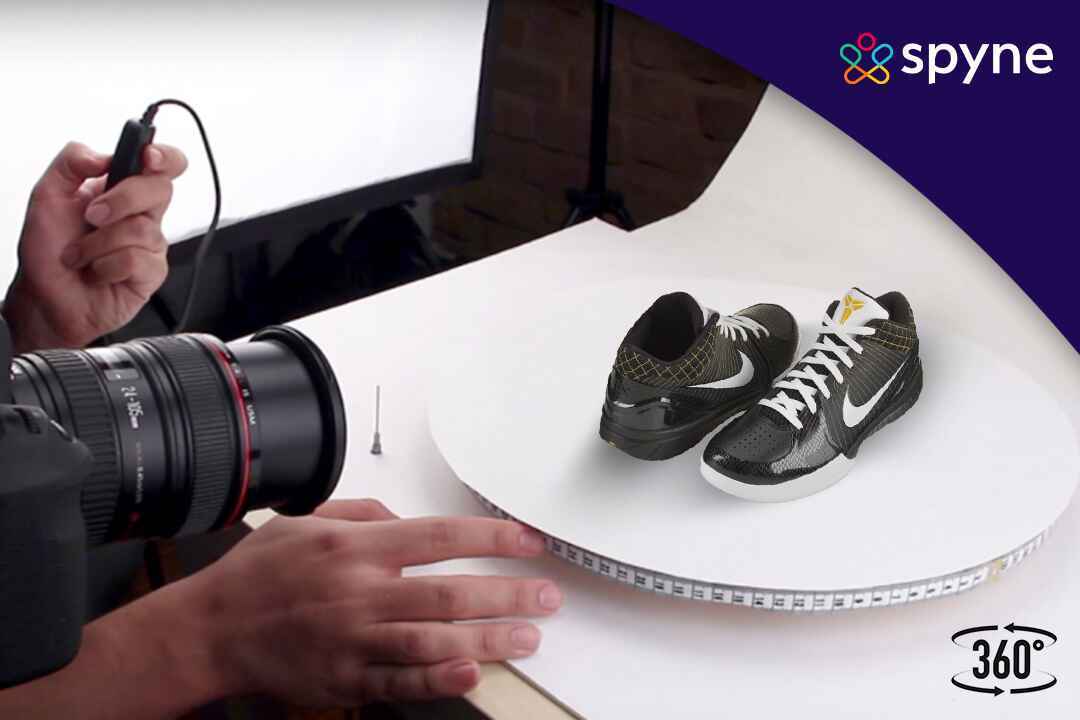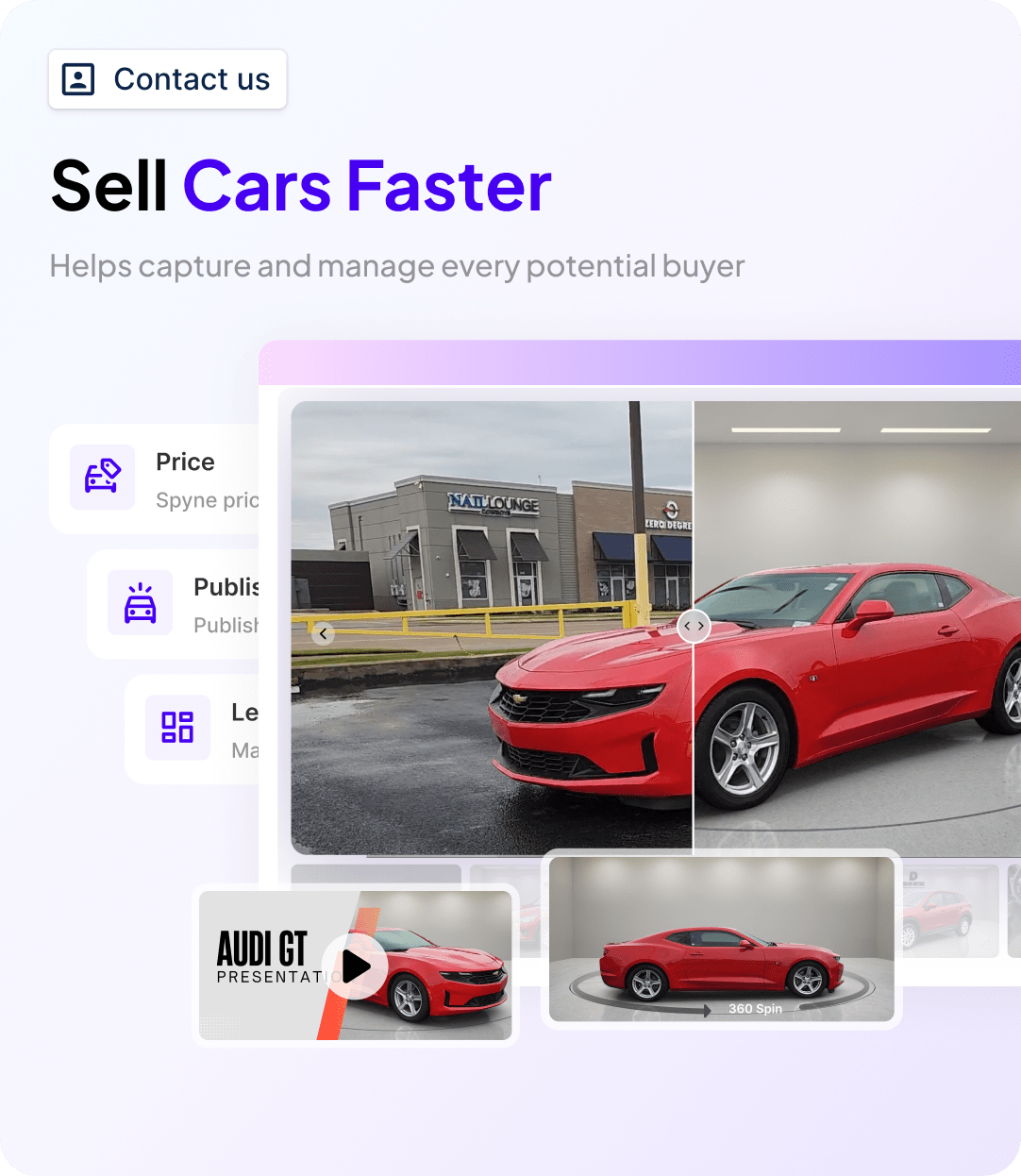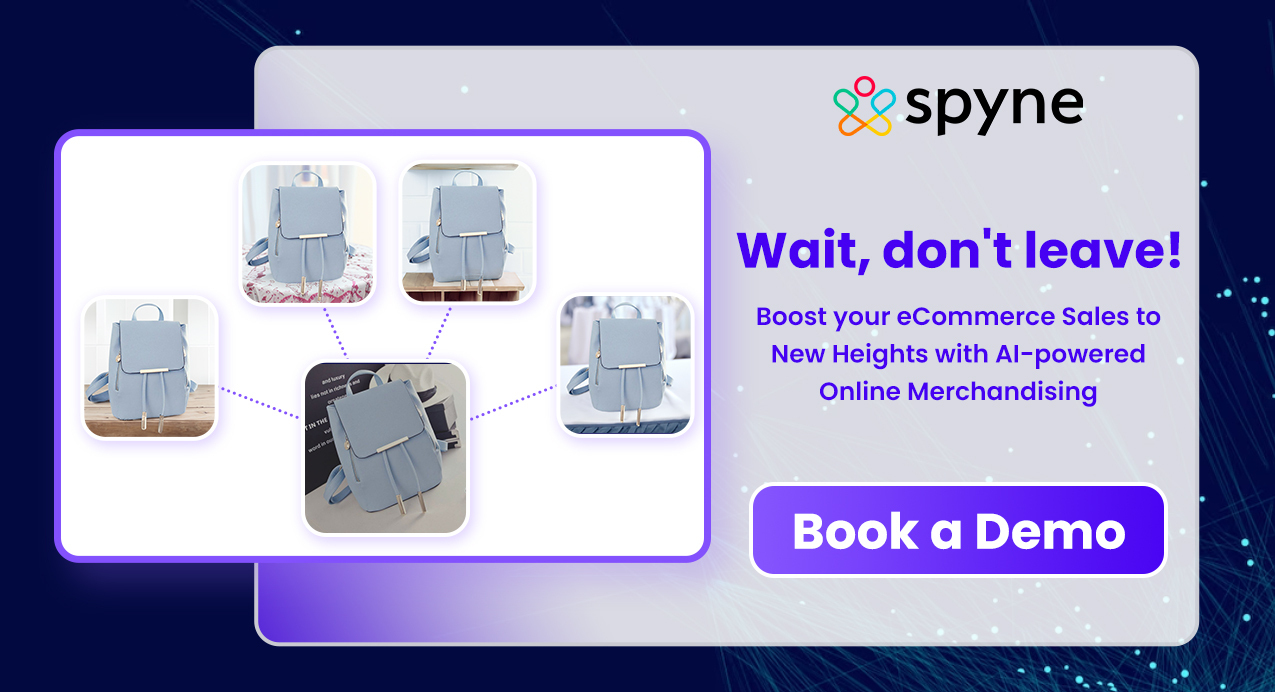How do you judge a product when you shop in a store? You pick up the product in your hand. Then view it from the top and bottom or left or right. Then you try imagining if it’s a good fit for your needs.
Why not offer the same immersive experience when shopping online? Do you know that only 2 percent of eCommerce websites convert visitors into sales? A mere quantum of 50 online shoppers is actually buying a product. The main reason behind such a massive abandonment is a lack of trust. Customers are unsure if what they want will be delivered or served.
Interestingly, solving this problem is as easy as a breeze. 360 product photography is your solution. It bridges the above-mentioned gap and brings a store-like experience to customers. In fact, implementing 360 degree product photography on your eCommerce product display page (PDP) can increase your sales by a whopping 47 percent.
So this blog will run you through everything you need about 360 product photography: what it is, why you need it, how it works, how it will benefit your eCommerce business, and much more. Let’s dive in.
What is 360 Degree Product Photography?
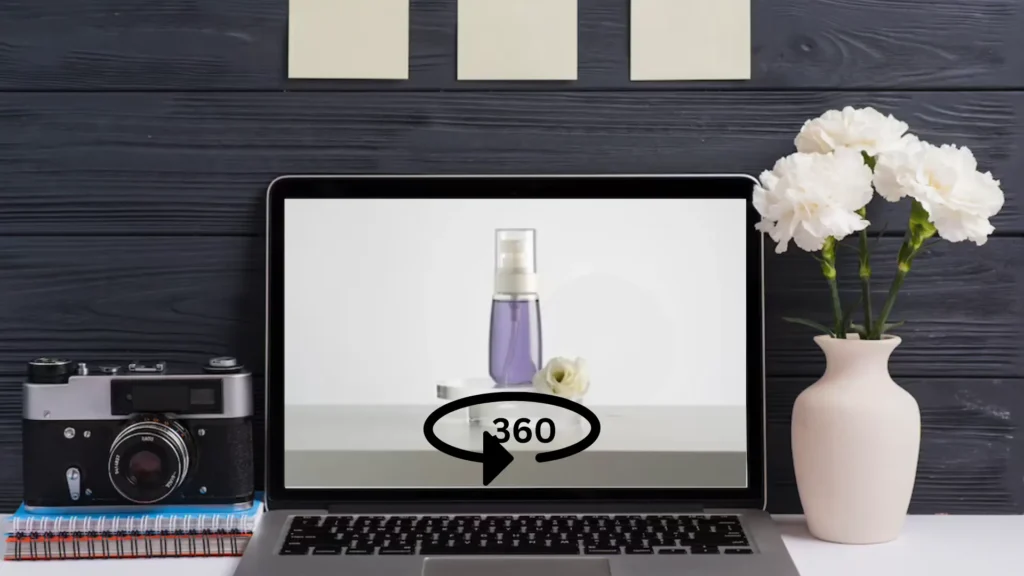
360 degree product photography, is a form of product content that enables you to capture and showcase products from various viewpoints. Its primary application is in eCommerce, product pages, and social media platforms, where it enhances product information and customer engagement. Typically, it involves taking a series of individual photographs of an object at uniform angles and combining them into a single view, mimicking the effect. Generally, this is done by substituting your product on a 360 product photography turntable.
Who should use 360 product photography?
While experimenting with 360 product photos could be advantageous for most eCommerce brands, this form of photography truly stands out when marketing products with intricate details, such as backpacks or complex hardware tools. By providing a complete 360-degree view, you can exhibit the entire product and enable your audience to examine every aspect in detail.
For instance, if you sell purses, you can display the interior and exterior of the product. If you manufacture a custom wardrobe, you can show how they appear with open sliders, empty shelves, and open drawers.
Here are some industries that could reap significant benefits from 360 product spin.
Fashion: Displaying shirts, sweaters, and dresses in multiple ways can enhance their appeal. 360-degree photography is an excellent method to make fashion items stand out.
Tools: Offering a complete view of tools and other hardware can help ensure that every detail is captured.
Retail: 360 product photos enable you to bring the “retail magic” to anyone viewing from the comfort of their home or while on the go.
Cars: Providing potential customers with a glimpse of what the car looks like before they schedule a test drive can be a great selling point.
Furniture: As Heal’s example demonstrates, furniture such as couches can benefit significantly from a 360-degree view.

How does 360 Product Spin Photography Work?
The process of capturing a 360 product spin is not as difficult as it seems. You will require a 360 turntable. The workflow for 360-degree product photography differs from still product photography. You capture multiple images from various angles when taking still product photos, resulting in lighting changes and frequent product handling between shots.
In contrast, 360 spin photography involves handling the product and adjusting lighting during the setup stage. You may need to use props to ensure the product is positioned correctly for the camera, which can be challenging as the props must not obstruct any part of the product during rotation.
Once the lighting and positioning are correct, you can begin the spin and review the result for quality. If the image meets your standards, move on to the next product.
How can 360-Degree Product Photography Benefit your eCommerce Business?
For a million reasons, you must implement 360-degree Product photography in your online business strategy.

Top-notch product display
Although online shopping has gained immense popularity, brick-and-mortar stores still hold a significant advantage as customers can physically touch and inspect an item. Like mentioned earlier, despite online stores having images of products, consumers still miss out on specific details they would have seen by holding and examining the product from every angle. Including a 360-degree product, photo can help you bring a store-like experience and provide customers with a satisfying product discovery phase.
Leveling up the overall shopping experience
The trust may not come naturally for shoppers not previously purchased from a new eCommerce website. By incorporating 360 product photography on your PDP, you can give customers a sense of security, assuring them they are shopping from a legitimate company. Moreover, it’s a part of improved website features that will help you eliminate any obstacles or concerns customers may have, thereby ensuring a frictionless purchasing process.
Boosting engagement on your eCommerce
Using 2D images is boring and doesn’t give you any perspective about the product on the screen. 360 product photos, on the other hand, offer a more immersive product experience for customers. Interactivity means potential buyers are more likely to spend more time on your website, allowing you to showcase why you’re a good fit. Interestingly, even research suggests that 360 product photography can increase website engagement by 32 percent. That is pretty much the reason why 91 percent of shoppers prefer retailers to include 360 product spin images on PDP.
Staying ahead of the curve with 360-degree product photography
As consumers increasingly turn to online shopping, finding ways to stand out from the competition is important. Enhancing product photos is one way to do so, along with optimizing product pages and providing excellent customer service. 360-degree shots are an affordable option that allows you to showcase your products in action. In a highly competitive ecommerce landscape, 360-degree product photography is a powerful tool to differentiate your brand and avoid getting lost in the noise.
360 product photography help sell more products
Human brains remember 80 percent of what they see and 20 percent of what they read. That’s why 78 percent of shoppers demand photographs on eCommerce platforms that can bring a product to life. Unfortunately, with 2D images, people can only see a few sides of the product, and for the rest, they have to rely on the product details in the description.
Providing a complete 360-degree view of products, from shoes to dresses to hardware, allows customers to visualize the item from all angles and understand how it may look and feel in real life. This is crucial in today’s digital age, where an effective online presentation of products is becoming increasingly important as consumer shopping habits continue to evolve. In fact, brands like Golfsmith.com saw a 10-40 percent increase in conversions after implementing 360 product photography on their online store.
360 product photography help reduce returns
2D Photos hold a major setback since they don’t allow customers to dive deeper into the product analysis. Normally, a product page includes merely two to three images, which is insufficient to understand the product’s appearance. This can create challenges and lead to dissatisfaction and massive cart abandonments.
This is where 360 product spin images play an important role. It can greatly enhance the customer experience by providing a complete view of products from all angles. Through interactive images, shoppers are able to rotate the item and zoom in and out to examine specific areas. This allows customers to obtain comprehensive information about the product before placing an order, resulting in increased sales and a 42 percent reduction in return rates.
When buyers are well-informed prior to making a purchase, the product is much more likely to meet their expectations, eliminating the need for returns.
360 product photos help establish trust with customers
Do you know that 69 percent of online shoppers leave the website or cart because of a lack of information or product details? Unfortunately, regular flat images on PDP provide a partial view of the product and force the customer to switch to competitors with a better catalog for the same product.
But with 360-degree product photography, one can judge a product’s appearance and dive into its quality and functionality. This process involves capturing several high-quality photos or CG renders of an item from various angles to create a comprehensive 360 view. Therefore, there is no doubt about the quality of materials4 used in a product.
Secondly, 360 views offer detailed observations of an item. Viewers can zoom in on specific features, such as zippers, buttons, and seams, in addition to rotating the image. Some 360 product views demonstrate basic functions, such as allowing shoppers to open drawers with a click. This provides shoppers with more information about the product and increases the likelihood of a purchase.
What is the Difference Between 3D and 360-Degree Product Photography?
Though 3D and 360 product photography sounds synonymous in broader terms, they are much different in processes and results. Here are a few main differences between a 3D and a 360 product photo.
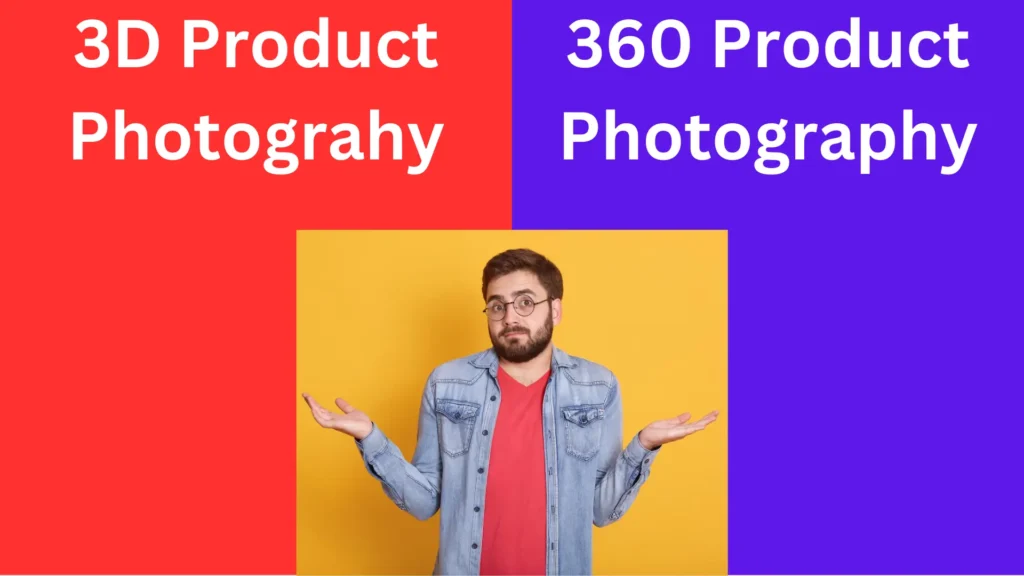
They have different processes
3D product images are computer-generated visualizations of an object that can be rotated and viewed from any angle. They are typically created using specialized software and can provide a detailed and customizable representation of a product.
On the other hand, 360 product spin images involve capturing a series of high-quality photographs of an object from various angles and stitching them together to create an interactive 360-degree view. This allows viewers to see the product from every angle and can provide a more immersive experience than static images.
3D images take longer to create
Creating 3D images takes longer due to increased camera shots and the need to reposition the camera for each plane. Setting up the product for photography also takes time, as you must plan how it will appear on each plane. Additionally, propping the product can lead you to allocate more of your precious time, as the props should not obstruct any part of the product during rotation. Depending on the number of planes, product complexity, and equipment used, one 3D image can take 15 minutes or more to complete. (Now imagine processing bulk images and uploading them in one go!)
3D images load slowly on browsers
3D images require more frames than 360-degree shots, resulting in a larger file size. For example, a 4-plane 3D product image with 24 images per plane at 2 MB per image totals 96 and 192 MB. Unlike a 360 product photo that’s only 48 MB, this takes time to load in a browser.
Interestingly, 360-degree view software helps you use low and high-resolution image sets. The low-resolution images load quickly in the browser, while the high-resolution images load in the background. This reduces wait times and improves the viewing experience for consumers.
3D product photography requires more equipment
To create 3D product images, you need a 360 product photography turntable and specialized equipment for capturing additional planes over the product. You need to spend your dollars on 5 to 10 cameras and lenses for either system, adding to the overall production cost.
3D photography is expensive
In line with the above point, 3D equipment tends to be more expensive. It’s primarily for two reasons: fewer manufacturers and the equipment is sophisticated, requiring many camera and lens sets or a robotic arm. Both types of 3D systems are costly. If you’re interested in 360 product photography, expect to spend more. However, you will find various 360-degree shots equipment available at different price points and quality levels, making it possible to find a system that fits your budget.
How to Take 360-Degree Shots of Products?
First, you will need equipment and software to control a 360 product photography turntable and camera. The software triggers the camera shutter at specified degree intervals as the specialized 360 photo turntable rotates on a single plane. For instance, for a 12-frame 360, the software triggers the camera shutter to take the first image. And then, the turntable rotates 10 degrees to capture the next one, and so on.
This will continue until the camera captures all 12 images. The 360 view software plays images chronologically, allowing customers to rotate, pan, and zoom in on distinct areas.
Here are quick steps to follow when capturing 360 product photos:
- Place your product in the center of the turntable and ensure the camera is properly positioned.
- Adjust the camera settings for exposure, focus, and white balance.
- The best 360 product photography software controls the turntable’s rotation and image capture intervals.
- Allow the turntable to rotate and capture images at each angle.
- Adjust the images’ brightness, contrast, and color to ensure high quality.
- Use specialized 360-view software to stitch the images together and create a 360-degree view of your product.
- Publish the 360 views of your product on your website or eCommerce platform to showcase your product to potential customers.
What Equipment do you Need for 360-Degree Product Photography?
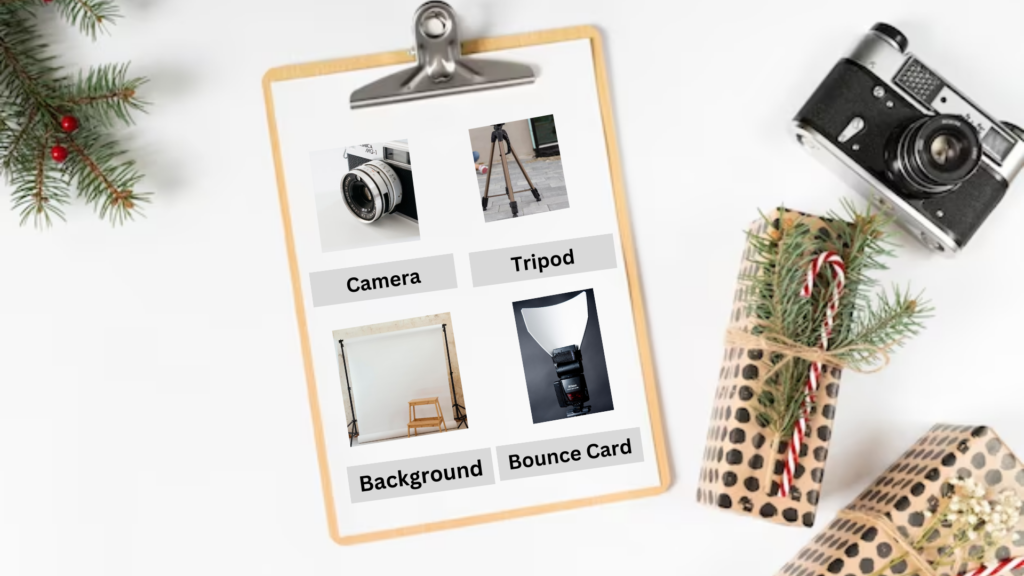
To capture 360-degree product photos, you will need the following equipment:
Camera: A high-quality camera with a wide-angle lens is necessary to capture the product from different angles.
Tripod: A sturdy tripod is needed to stabilize the camera during the photoshoot.
360 photo turntable: A specialized turntable that rotates on a single plane positions the product at different angles during the photoshoot.
Lighting equipment: Good lighting is crucial to capture high-quality images. You can use a combination of natural light and artificial lighting sources, such as LED or strobe lights, to illuminate the product.
Background: A plain and neutral background is needed to keep the focus on the product.
Softbox: To soften or diffuse the light if you are using strobes.
Diffuser panels: To scatter the light and reduce harsh shadows to create a soft, uniform illumination on the product.
Editing software: After capturing the photos, you will need software to edit and stitch the images into a seamless 360-degree view.
Optional: Remote shutter release, diffusers, reflectors, and other photography accessories can be useful to enhance the quality of your photos.
360 View Software: What is it, and Why do you Need it?
360 view software is a specialized application that allows users to display and interact with a 360 product photo on a website or other digital platform. This software provides customers with an immersive and interactive experience, allowing them to view products from any angle and zoom in to see details.
The software displays a series of high-quality product images taken from multiple angles, stitched together to create a seamless 360-degree view. Customers can then interact with the image using their mouse or touch screen to rotate and zoom in on the product.
Moreover, using 360 view software, users can navigate around the environment, look at different angles, explore objects in the environment, and even save their view as a screenshot or 360 product video. This makes it incredibly useful for shoppers to get an idea of what the product will look like when they wear it (if it’s apparel) or look on their tea table (if it’s home decor).
Why do you need 360 view software?
An eCommerce business can benefit from using 360 view software for several reasons. Firstly, it can help customers better understand the product they are buying. By providing a 360 view, customers can better understand the product’s shape, size, and features before purchasing it.
Additionally, it can increase user engagement and create a more immersive shopping experience. Customers are able to explore a product in a more interactive and realistic way, which can increase the chance of them making a purchase.
Finally, a 360 view can significantly boost SEO, as it gives customers more information about the product and can help increase rankings. You can also use it to create virtual store tours and other interactive experiences, helping drive more traffic to the website.
Final Word
If you plan to scale your eCommerce channels and reel in more customers, it’s time you take your product images on your PDP seriously. Creating 360 spin images free helps you provide shoppers with the best possible buying experience, showcasing product quality and surpassing competitors are prime elements to success in eCommerce for free. It delivers on these three pillars of eCommerce success, making it more than just the latest craze.
However, going with the manual web rotate 360, processing them, and then uploading them can be extremely exhausting and costly. You will need equipment, 360 product photography turntables, software, professionals to edit and upload bulk and heavy media on websites, etc. So, the only way is to figure out how to win customers through 360 product photos without burning your precious dollars. And the solution to this is DIY 360 product photography.

